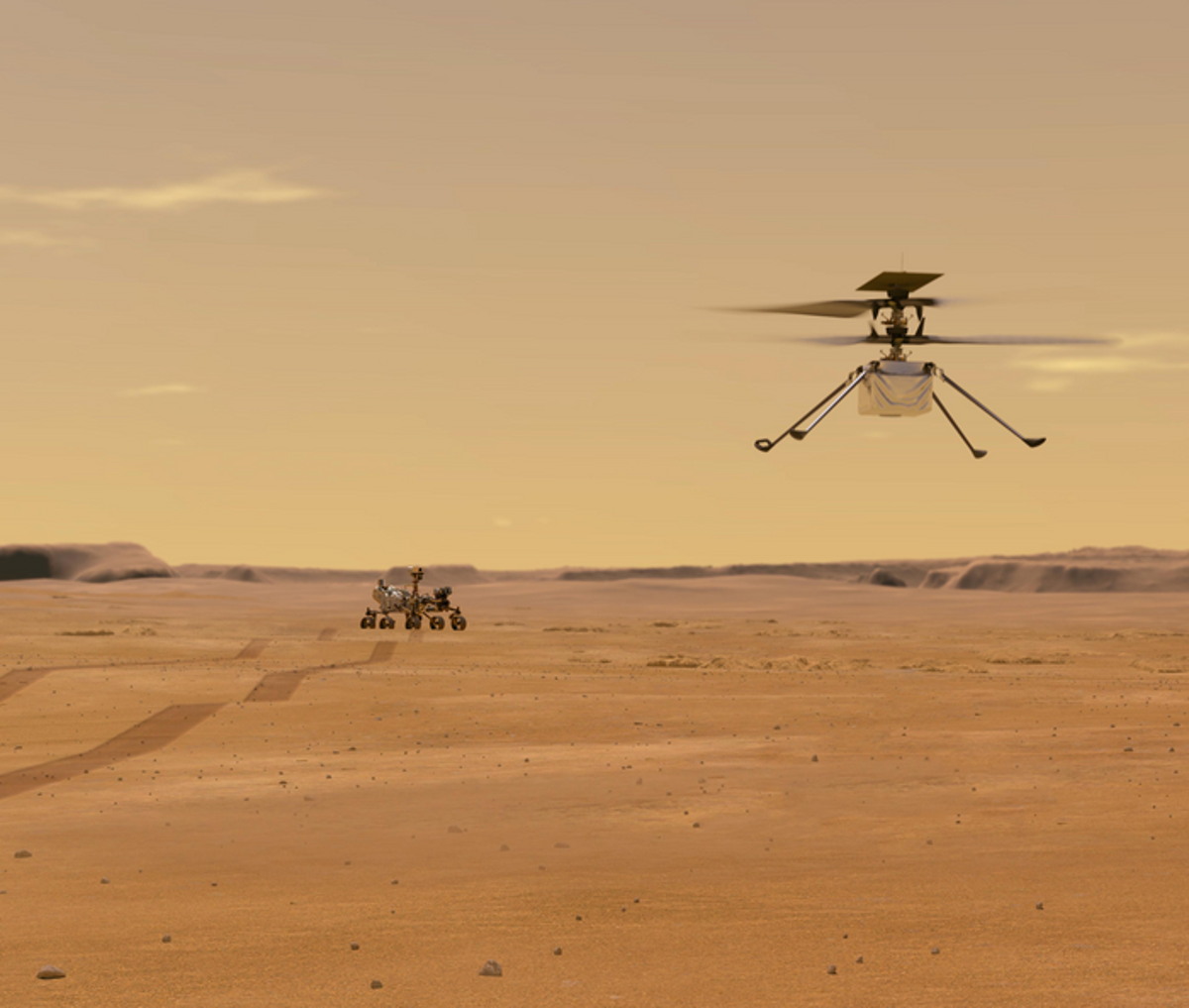China unveils ‘foldable’ Mars helicopter in mission to return samples to Earth

China is following in Nasa’s footsteps by developing what researchers have called a “foldable” Mars helicopter that could help the country’s space agency retrieve samples from the Red Planet in a future mission.
Until recently, rovers sent to explore other worlds like Nasa’s Curiosity or China’s Zhurong have mostly stayed rooted to the ground, exploring unfamiliar terrain on wheels.
In 2021, Nasa’s Ingenuity Mars helicopter revolutionised interplanetary exploration and proved successful beyond expectations by conducting several ground-breaking flights on the Red Planet.
The 1.8kg chopper demonstrated vertical take-off and powered flight on Mars and has proven to be a successful model for future aerial explorers for the Red Planet.
China now appears to be getting in on the act as it has proposed developing a quadcopter that could assist in returning rock samples from Mars, revealed a new study.
One of the main challenges in developing rotor crafts for Mars is to have them take off and maintain controlled flight in thin Martian atmosphere, where the surface air pressure can be as low as that seen at an altitude of 30-40km on Earth.
Building on the success of Nasa’s Ingenuity, China’s proposed rotorcraft, dubbed MarsBird-VII, is a quadcopter with four sets of blades designed to have enhanced lift and performance.
“MarsBird-VII is a Mars quadcopter capable of independent aerial exploration with a rated take-off weight of 4kg,” said scientists from Harbin Institute of Technology in China.
Unlike Ingenuity, the quadcopter is also capable of collecting a sample weighing up to 100g and returning it to its mission lander, researchers said.
With four sets of blades in each corner of the rover, the quadcopter design can also allow for the rotorcraft to be folded and transported to Mars.
The quadcopter has a “lightweight structure and a fully functional guidance, navigation and control (GNC) system” to help it fly autonomously in the thin atmosphere of Mars, said researchers.
It also has a robotic arm to help it pick up rock samples.
“A foldable Mars quadcopter improves the efficiency and flexibility of Mars sample return tasks,” they wrote in the study published in the journal Acta Astronautica.
Such helicopters are envisioned to bridge the gap between the large-scale birds-eye view observation offered by orbiters and local observations provided by rovers.
Helicopters can go faster and farther than ground rovers and have the potential to access steep and complex landforms.
The Chinese researchers behind the new study believe the MarsBird-VII provides a “viable engineering approach” for Mars flight exploration and sample return.
They have, however, not yet tested the Mars quadcopter’s autonomous flight and environmental adaptability capabilities.
They hope to further refine the chopper’s design and autonomous flight algorithm to ensure it can reliably fly on the Red Planet’s thin atmosphere.

 Yahoo News
Yahoo News 
